Prismatic vs Pouch LiFePO4 Batteries: Which is the Best for Your RVs, Boats, or Solar Homes?
Choosing the right lithium-ion phosphate battery for your RVs, boats, or solar homes can be challenging without knowing the differences in battery construction, performance, and durability. Therefore, it's essential to understand the significance of battery cell packing type when selecting a Lithium Iron Phosphate (LiFePO4) battery. The cell packing type plays a vital role in the battery's overall performance and longevity, making it a crucial factor to consider. In this blog, we'll explore why understanding why battery cell is critical when choosing the right battery for your specific application, and take an in-depth look at pouch LiFePO4 battery and prismatic LiFePO4 batteries.
Each type of LiFePO4 battery cell has its own advantages and disadvantages, and the choice of cell depends on the specific application.
Part 1: Types of LiFePO4 battery cells
1. Cylindrical LiFePO4 cells
These cells typically have a metal casing that protects the positive and negative electrodes, which are wound into a spiral or cylindrical shape. Cylindrical LiFePO4 cells come in various sizes, with some of the most common being 18650, 26650, and 32650.
Cylindrical LiFePO4 cells are commonly used in applications where high energy density and long cycle life are required, such as electric vehicles, power tools, and home energy storage systems. They are also well-suited for use in parallel and series arrangements to create larger battery packs with higher voltage and capacity.
Like other LiFePO4 batteries, cylindrical LiFePO4 cells offer several advantages over other battery chemistries, including high energy density, long lifespan, and excellent safety characteristics. However, they do require careful handling and charging to ensure optimal performance and longevity.
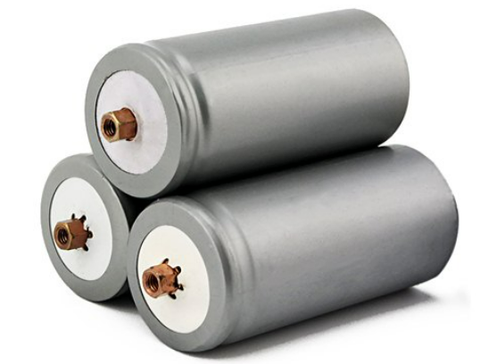
Prismatic LiFePO4 cells
Prismatic LiFePO4 batteries are named for their rectangular, prism-like shape. They typically have a hard plastic casing that protects the battery cells and can be stacked together to create larger battery packs. Prismatic LiFePO4 batteries are commonly used in electric vehicles, solar power systems, and other applications that require high-performance and long life. Most of LiTime LiFePO4 batteries are made of prismatic cells.
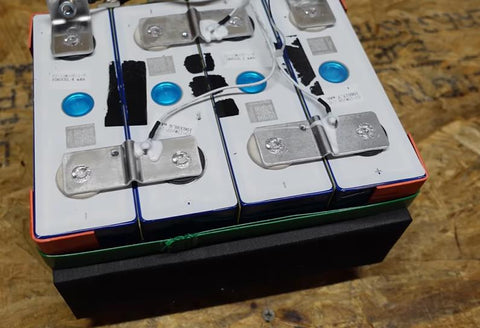
Polymer LiFePO4 cells
These cells use a polymer electrolyte instead of a liquid electrolyte, which makes them lighter and more flexible. They are commonly used in portable electronics, energy storage for RVs, boats, off-grid homes and more.
Pouch LiFePO4 cells
These cells are thin and flexible, making them ideal for use in portable devices. They offer higher energy density than other types of LiFePO4 cells but are still highly reliable and long-lasting.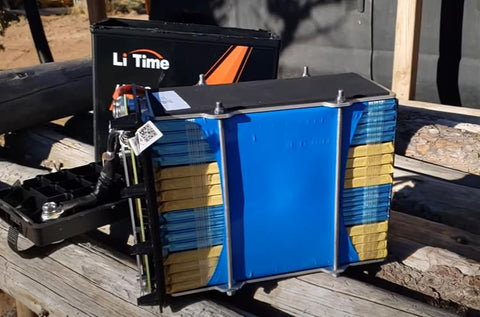
Part 2: Pouch LiFePO4 Battery VS Prismatic LiFePO4 Battery
A pouch LiFePO4 battery is a type of rechargeable battery that uses lithium iron phosphate (LiFePO4) as the cathode material and a flexible Aluminum Laminate film as the battery casing.
Compared to traditional cylindrical or prismatic LiFePO4 batteries, pouch LiFePO4 batteries have a higher energy density, are more flexible and lightweight, and can be customized to fit a variety of shapes and sizes.
Pouch LiFePO4 batteries are commonly used in applications where high energy density, high power output, and long cycle life are required, such as electric vehicles, solar power systems, and portable electronic devices. They are also considered to be safer and more environmentally friendly than other types of lithium-ion batteries, as they are less prone to overheating and do not contain toxic heavy metals.
Prismatic LiFePO4 batteries have a rigid, rectangular shape and are typically made up of stacked electrode layers that are separated by a thin polymer film, typically used in larger applications that require more power and capacity, such as electric vehicles, solar power storage systems, and backup power supplies for buildings.
2.1 Pouch LiFePO4 battery offer several advantages over prismatic LiFePO4 battery
Both Pouch and prismatic LiFePO4 battery can be safe when used properly, Pouch LiFePO4 battery are generally considered to be the safer option due to their flexible casing, improved thermal management, and reduced risk of internal short circuits and swelling.
① Flexibility
Pouch LiFePO4 batteries are more capable of distributing stress evenly across their surfaces compared to prismatic batteries because they are more flexible than prismatic cells, which means they are less likely to crack or break if they are dropped or subjected to physical stress.
② Lower Risk of Thermal Runaway
Pouch cells are also less likely to experience a thermal runaway event, which is a phenomenon that can occur when the battery overheats and causes a rapid, self-sustaining reaction that generates heat and gases. This can cause the battery to explode or catch fire. Pouch cells are less prone to thermal runaway because their flexible casing allows the battery to expand and release gas in the event of an overheat, which can help to dissipate heat and prevent a runaway reaction. This means that they are less likely to overheat and catch fire, which makes them ideal for use in applications where safety is a concern, such as in electric vehicles, RVs, boats, off-grid homes.
③ Reduced Risk of Swelling
Pouch cells are less likely to swell than prismatic cells, which can occur when the battery is overcharged or exposed to high temperatures. Swelling can cause the cell to rupture or leak, which can be dangerous. Pouch cells have a more flexible casing that can help to dissipate the pressure caused by swelling, which can prevent the cell from rupturing.
LiTime 12V 100Ah Mini is made of pouch cells, here's the battery cell drill test.
④ Improved Thermal Management
Pouch cells have improved thermal management because the flexible casing allows for better heat dissipation. This can help to prevent the cell from overheating and reduce the risk of thermal runaway.
⑤ Better Heat Dissipation
A pouch battery may have a thinner profile and larger surface area compared to a prismatic battery, allowing for better heat dissipation. The aluminum shell of prismatic LiFePO4 battery has poor heat dissipation, while the material of the pouch pack is much better, so its high-temperature cycling performance is also better.
⑤ Flexibility
Pouch LiFePO4 batteries are more flexible (lighter, smaller, and higher energy density), which makes them ideal for use in applications where size and weight are key, such as RVs, fishing, and more outdoor applications.
⑥ Lightweight
Pouch LiFePO4 batteries are lightweight compared to other lithium batteries, which makes them ideal for use in portable devices. The lightweight nature of these cells also makes them easier to transport and handle.
⑦ Longer lifespan
Pouch LiFePO4 batteries have a longer lifespan, which means that they can be used for a longer period of time before needing to be replaced. This makes them more cost-effective in the long run. Generally, LiTime LiFePO4 batteries support at least 4000 cycles at 100% DOD.
Part 3: Applications for Pouch LiFePO4 Batteries
Pouch LiFePO4 batteries are a great choice for outdoor applications because they are durable, reliable, and have a long cycle life. They can withstand extreme weather conditions, making them ideal for use in outdoor environments.
① Solar-powered lighting: Pouch LiFePO4 batteries are ideal for powering outdoor solar lighting. They are lightweight, durable, and have a long cycle life. Additionally, they are resistant to extreme temperatures and weather conditions.
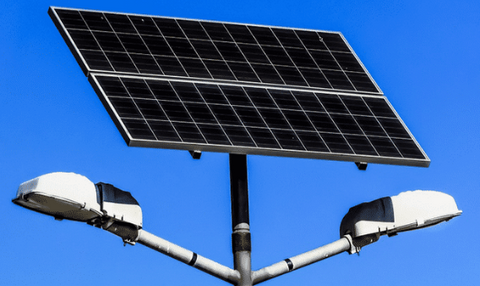
② Electric vehicles: Pouch LiFePO4 batteries are widely used in electric vehicles (EVs) because of their high energy density, fast charging capabilities, and long cycle life. Outdoor EV charging stations can benefit from these batteries as they can withstand extreme weather conditions.
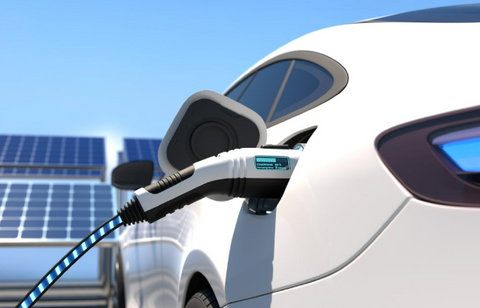
③ Backup power for off-grid systems, such as remote weather stations, wireless communication systems, and other outdoor equipment. They are also ideal for powering off-grid homes and cabins.

④ Marine applications, such as electric boats, yachts, and other watercraft. They are waterproof and resistant to corrosion, making them ideal for harsh marine environments.

⑤ For RV and camping applications, Pouch LiFePO4 batteries can be used to power various devices such as lighting, refrigerators, air conditioners, and other electronic devices.

Part 4: Frequently Asked Questions
1. What is a Pouch LiFePO4 battery, and how does it work?
A Pouch LiFePO4 battery cell is typically made up of a thin Aluminum plastic pouch that contains the battery components, including the electrodes, electrolyte, and separator. The pouch is then sealed to prevent leakage and protect the cell from moisture and damage. The battery works by transferring lithium ions between the cathode and the anode during charging and discharging.
2. What are the advantages of using a Pouch LiFePO4 battery?
The advantages of using a Pouch LiFePO4 battery include long cycle life, fast charging, high energy density, low self-discharge rate, and improved safety features.
3. What is the typical lifespan of a Pouch LiFePO4 battery?
A Pouch LiFePO4 battery can have a lifespan of up to 10 years or more, depending on usage and environmental factors.
4. Can I use a Pouch LiFePO4 battery in cold weather conditions?
Yes, Pouch LiFePO4 batteries can operate effectively in cold weather conditions as they have a better performance than other lithium-ion batteries.
5. Can I overcharge or over-discharge a Pouch LiFePO4 battery?
No. LiTime LiFePO4 batteries have a built-in battery management system that prevents overcharging or over-discharging, ensuring the battery's safety and longevity.
6. Can I use a Pouch LiFePO4 battery in place of a lead-acid battery?
Yes, Pouch LiFePO4 batteries can be used as a direct replacement for lead-acid batteries in many applications, including electric vehicles, off-grid solar systems, and marine applications.
7. How fast can a LiFePO4 battery charge?
A LiFePO4 battery can be charged at a faster rate than a traditional lead-acid battery, and in some cases, can be charged up to 80% in less than an hour. We suggest you using LiFePO4 battery charger in order to keep the battery in good conditions.
8. How do I store a LiFePO4 battery properly?
It is recommended to store LiFePO4 batteries in a cool and dry place, away from direct sunlight and heat sources. It is also recommended to keep them charged to about 50% of their capacity during storage.
Conclusion
In summary, when selecting a LiFePO4 battery for specific applications such as RVs, boats, or solar homes, it is crucial to understand the significance of battery cell packing type. Pouch and prismatic LiFePO4 batteries are two different types of cells with their advantages and disadvantages.
Pouch batteries offer higher energy density, flexibility, improved thermal management, and reduced risk of internal short circuits and swelling. They are ideal for portable electronics, solar-powered lighting, electric vehicles, marine applications, off-grid systems, RVs, and camping applications.
On the other hand, prismatic batteries are typically used in larger applications such as electric vehicles, solar power storage systems, and backup power supplies for buildings. The choice between the two depends on the specific needs of the application.
Hope this article helps you.
------------------------------------------------------------------------------------------------
You may also like:
<<< LiFePO4 Lithium Batteries In Series VS Parallel: How-To & Everything You Need To Know
<<< Why Choose LiFePO4 Lithium Iron Phosphate Batteries For Outdoor Solar RVs & Camper Vans?








